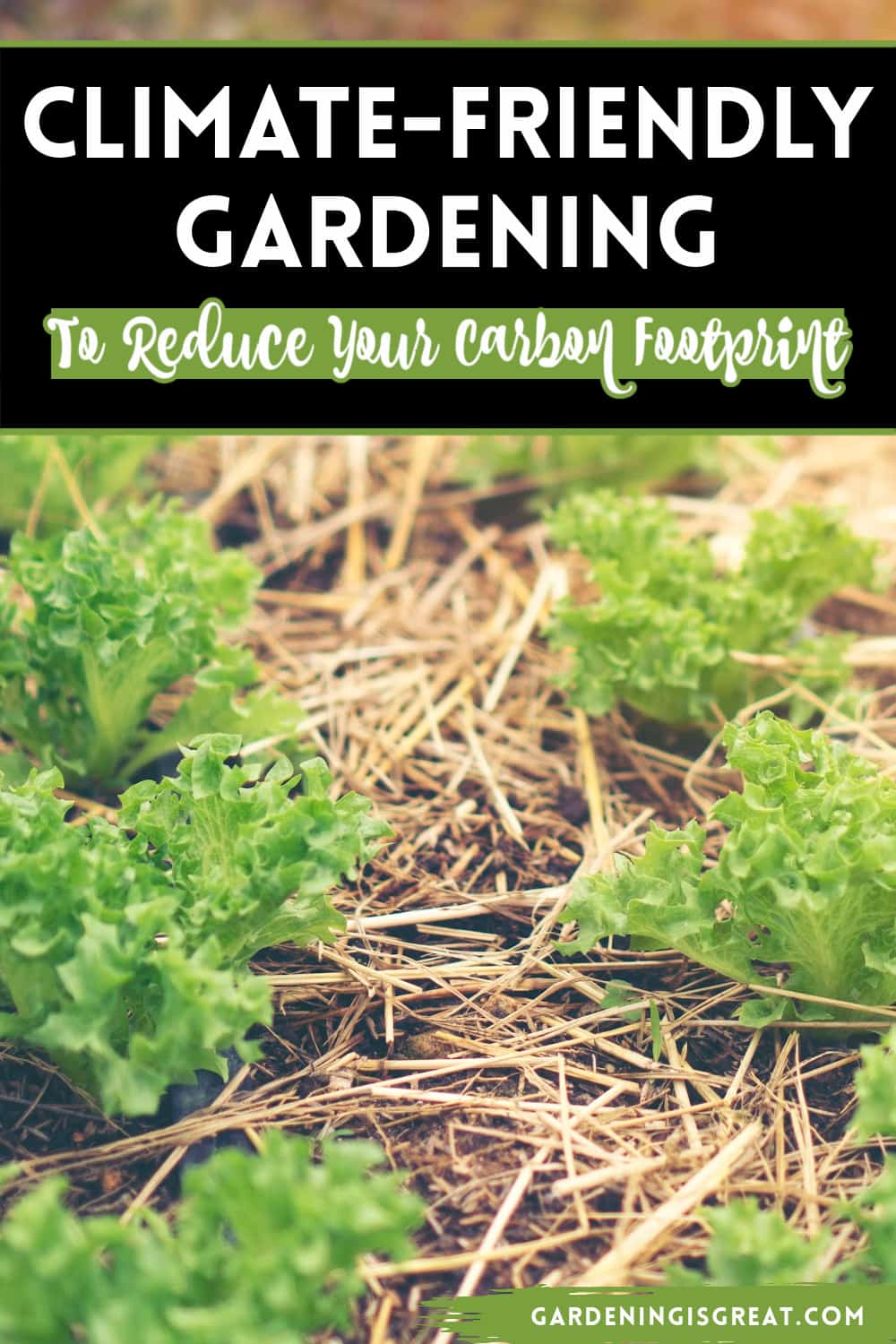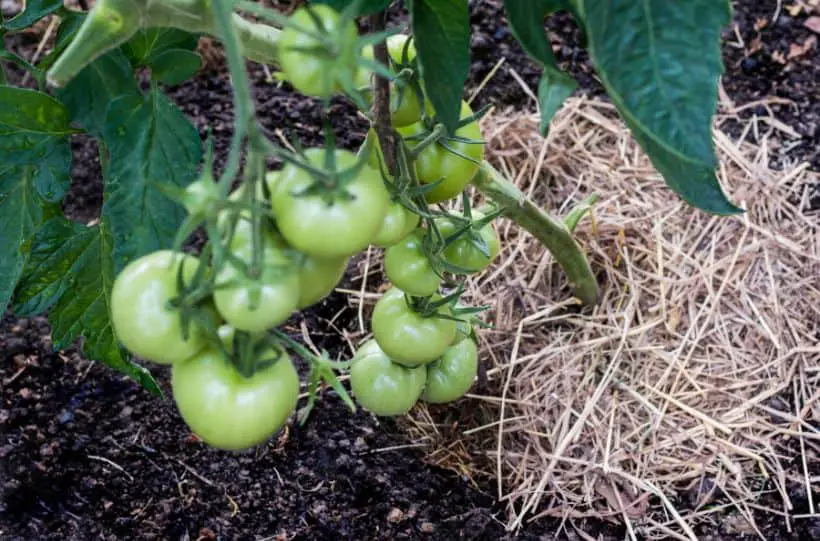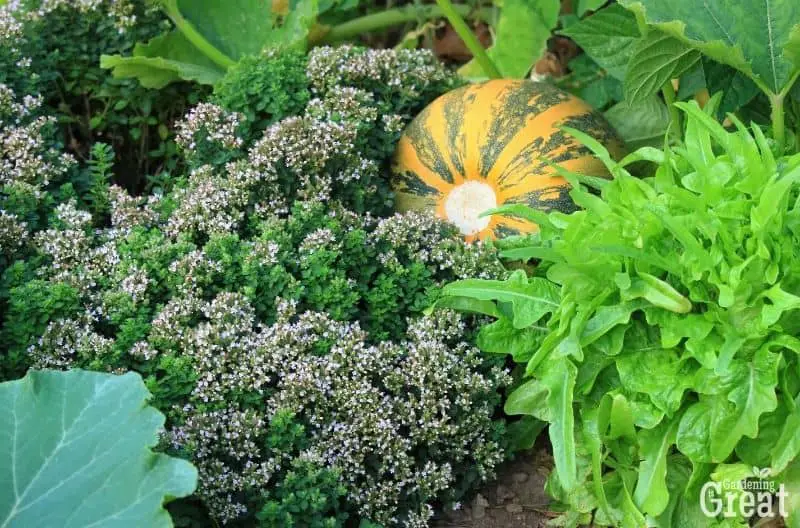Climate-Friendly Gardening Practices and Techniques
These eight climate-friendly gardening practices and techniques are simple to do yet efficient and cost-effective, and will produce an abundance of food!
Are you looking for ways to reduce your carbon footprint in your garden?
Climate change is a serious problem that affects us all. But we can help do something about it!

Here are 8 climate-friendly gardening techniques that will not only save you money but also reduce greenhouse gas emissions.
Grow more food with less water, fertilizers, and pesticides while reducing waste from packaging and transportation.
No-Till/No-Dig Gardening
This is probably the most important and easy thing to do if you want to start reducing your carbon footprint in your garden.
By not digging or disturbing the soil, you are preserving the micro-organisms (bacteria, fungi, microbes, etc.) that make up healthy topsoil. Instead of just throwing down seedlings, you can grow them all yourself (or buy them from a local farmer).
If you think that by not digging or disturbing the soil, your plants won’t grow or produce as much…you’re wrong!
Plant growth and production actually increase because seedlings can establish themselves without competition.
No-dig gardening or no-till gardening is one of the easiest ways to reduce your carbon footprint in your garden.
Composting and Vermicomposting
Composting is the process of breaking down organic matter (i.e., kitchen scraps, food leftovers, lawn clippings, manure, etc.) into soil-like material (aka compost) that is rich in nutrients and feeds your plants.

This process creates the ideal environment for topsoil to flourish because it provides all of the essential nutrients in just the right amounts that plants need for optimal growth.
By using a composter, you are also reducing the amount of garbage you send to landfills, reducing greenhouse gases because they don’t have to run the methane gas-powered incinerators that burn all of your trash.
Another great thing about composting is there are so many different ways you can do it…from compost piles to worm bins, which means anyone from any budget can get involved.
Vermicomposting takes the same concept as standard composting but is a perfect solution for people that live in small spaces. If you don’t have an outdoor space, then vermicomposting may be something to consider because all you need is a bucket or bin and some worms!
Mulching And Cover Crops
Mulching is the process of depositing a layer of material (straw, leaves, grass clippings) directly on top of your soil, which reduces water evaporation and prevents weeds from growing.
This technique can be applied multiple times throughout the year to provide maximum benefits, but it is especially helpful early in the season when soil temperatures are cooler.

Cover Crops (aka Green Manure) can be used for mulching and work about the same as normal mulch i.e., weed suppression, moisture retention, less work…but they have an additional benefit that makes them even more awesome: nitrogen fixation.
What is nitrogen fixation? Nitrogen Fixation is the process of converting atmospheric nitrogen into a usable form for plants (i.e., ammonia, nitrate, etc.) so that they can be used as nutrients by your garden plants and vegetables.
Polycultures and Diversity
In permaculture, we strive to mimic natural habitats (forests, fields, etc.) by creating an environment that uses each plant or animal to its full capacity. In the wild, every species is important because they all play a role in how the habitat functions as a whole.
By mimicking this process in our gardens and using polycultures (i.e., patches or zones of different crops), we create a habitat for beneficial insects and organisms that prey on the bad bugs, and a more diverse ecosystem is created that allows everything to exist in harmony with one another.
Perennial Vegetables
Perennial vegetables like asparagus or artichokes grow to maturity with very little maintenance once they establish themselves. However, unlike fruit trees and shrubs that may live for many years before bearing fruit, perennial vegetables may produce more quickly!

Perennial vegetables are a great way to create less work in your garden because they make you less dependent on annual vegetable plants, and the ecosystem that is created with all of these beneficial organisms ends up being more self-sufficient.
Biochar
Biochar is a form of carbon that can be used in your garden to boost the health and productivity of the soil. How does this work? Biochar has an incredible ability to retain nutrients, so their availability increases over time instead of washing right through most soils.
On top of that, biochar helps to improve soil tilth, which means it increases the number of air spaces within the soil so that water and nutrients can reach your plants more efficiently.
It is also important to note that biochar is mostly created from agricultural waste (stalks, stems, husks), so this method of improving soil quality doesn’t mean we need to cut down more trees and forests to provide the building materials for charcoal production.
Planting Trees
Trees can help draw CO2 out of the atmosphere and provide oxygen for us to breathe, but that’s not all trees can do.
Not only do they offer these benefits to all of life on earth by creating habitat and clean air, but planting the right tree in the right place could add years to your garden’s productivity because it increases soil quality and water retention.
Planting more trees is something that everyone can do to reduce their carbon footprint.
Hugelkultur
Hugelkultur is a German term that means “mound culture.”
The hugelkultur mound can be made out of any type of wood (twigs, branches, logs, etc.), and you stack them on top of the ground. In 3-5 years, this will decompose and create a raised bed with incredible soil quality.
The reason for the exceptional soil is that as the wood decays, it creates channels within the mound allowing water to flow through more easily – this means reduced runoff and erosion from heavy rains or watering.
On top of that, because the wood creates a raised bed and the soil quality is so good, it also means that more of your water will reach the roots of your garden plants.
This method of creating a hugelkultur mound will not only make growing easier for you, but it could save your garden from being overcome by weeds once one or two seasons have passed.

In no way are these eight methods of improving the productivity and health of your organic garden meant to be an exhaustive list. Every gardener is different, and they all have their own techniques that work best for them.
These 8 ideas serve as a jumping-off point for those who are interested in moving towards more climate-friendly gardening methods.
